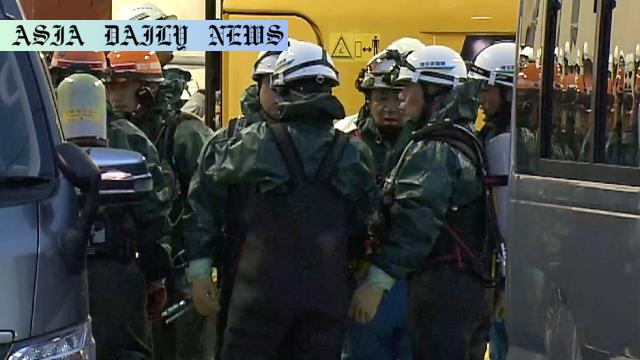Sinkhole reveals grim discovery in Yashio, Japan, as the body of a missing truck driver is recovered, ending a months-long search.
- Key Point 1: A sinkhole in Yashio, Japan swallowed a truck in January, leaving a 74-year-old driver unaccounted for.
- Key Point 2: Authorities recovered the driver’s body from the truck cabin, found in a sewage pipe.
- Key Point 3: Restoration of the area by the Saitama prefectural government is underway to prevent further incidents.

Major Sinkhole Incident in Yashio, Japan
In a tragic turn of events, a massive sinkhole that opened up in the city of Yashio, north of Tokyo, claimed a life and left the community seeking answers. The sinkhole, which occurred in January, swallowed a truck at a busy intersection and left the vehicle’s 74-year-old driver missing ever since. This catastrophic event unfolded in an urban area, causing widespread shock and raising questions about infrastructure resilience in the region.
Discovery of the Truck Cabin
Authorities had been working diligently for months since the sinkhole formed, searching for the missing individual and the truck’s cabin. It was later revealed that the truck had settled in a sewage pipe below the surface—an area virtually inaccessible without significant risk of further subsidence. Recent advancements in safety measures at the site enabled firefighters and rescue teams to safely enter the pipe. On Thursday, they located what appeared to be the body of the missing driver inside. Though the recovery effort was fraught with challenges, the retrieval occurred without complications, marking a somber resolution to this ongoing case.
Community Impact and Ongoing Efforts
The repercussions of this disaster have rippled across the local community, affecting not just the family of the deceased but also igniting concern over urban safety. Residents in Yashio and beyond have begun questioning how such an infrastructural failure could occur, as well as whether preventative measures are sufficient. The Saitama prefectural government has pledged to retrieve the truck cabin fully and repair the area. Additionally, experts are calling for widespread inspections of infrastructure across the region to ensure public safety.
Lessons for the Future
This tragic incident underscores the importance of proactive infrastructure management and the need to address aging systems in urban areas. While efforts have been made to ensure such disasters don’t reoccur, it requires continued vigilance, modern technology, and investment from local authorities. Yashio’s case serves as a grim reminder of the potential dangers lurking beneath the visible urban landscape.
As efforts to restore the Yashio intersection are underway, the community is left mourning the loss while demanding accountability and change to prevent future tragedies.



Commentary
Reflecting on the Yashio Sinkhole Incident
The Yashio sinkhole tragedy is a somber reminder of the vulnerabilities within urban infrastructure. The incident, which claimed the life of a 74-year-old driver, not only startled the local community but also sent shockwaves across Japan regarding the risks of infrastructural decay. When major accidents like this occur, questions inevitably arise about the adequacy of preventive measures in place to protect citizens and avoid disaster.
Infrastructure Challenges in Modern Urban Centers
Urban areas, especially in technologically advanced nations like Japan, are often perceived as safe and meticulously maintained. However, incidents like this highlight the hidden challenges of maintaining aging infrastructure within rapidly urbanizing regions. Sewage systems, roadways, and other underground facilities require routine inspections, yet limited resources or oversight can lead to tragic oversights. This incident serves as a wake-up call for governing bodies to carefully evaluate and modernize their risk assessment and disaster prevention strategies.
The Importance of Community Awareness
The aftermath of the Yashio sinkhole raises another critical issue: the community’s role in proactively identifying and addressing warning signs before disasters strike. Local governance and public awareness play vital roles in minimizing risks. By educating citizens about recognizing early signs of structural weakness or reporting suspicious occurrences, municipalities can work hand-in-hand with residents to increase overall safety levels.
Ultimately, this event should not only galvanize the Saitama prefectural government into action but also serve as a case study for global urban centers. Modern cities must prioritize infrastructural resilience as an integral part of urban development, ensuring safety for all residents while minimizing the risks of these avoidable tragedies.